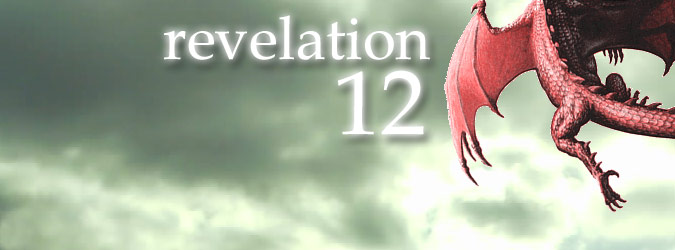 It’s Christmas. So put up your nativity sets. Polish up your star of Bethlehem. Feed the donkeys. Put your plastic baby Jesus in the manger. I guess we should dress up as shepherds, wise men, and angels. Let’s do the nativity all over again as we do every year. Get some cute little girl to play Mary, hold hands with a cute little Joseph. Watch them bring frankincense, gold, and myrrh. We can sing “Little Drummer Boy” and “We Three Kings”. If we want to get theological we can argue about whether Jesus was born in a stable, a guest room with animals, or a cave. We all know the story.
It’s Christmas. So put up your nativity sets. Polish up your star of Bethlehem. Feed the donkeys. Put your plastic baby Jesus in the manger. I guess we should dress up as shepherds, wise men, and angels. Let’s do the nativity all over again as we do every year. Get some cute little girl to play Mary, hold hands with a cute little Joseph. Watch them bring frankincense, gold, and myrrh. We can sing “Little Drummer Boy” and “We Three Kings”. If we want to get theological we can argue about whether Jesus was born in a stable, a guest room with animals, or a cave. We all know the story.
But let me ask you this. What if we could do the nativity story written by Stephen King? What would it look like?Stephen King has written some pretty scary and graphic horror novels that could give any kid nightmares. What would the nativity look like if Stephen King wrote and directed it? Well picture this: A woman is in the final throes of child birth crying out in agony, her legs spread apart, ready to expel the baby from her loins. And, now it gets creepy, a dragon is there with her, poised, hungry, leaning over her, eagerly waiting to devour whatever is ejected from her birth canal. Sound disgusting. Well, this in fact is the nativity of John the Seer as found in Revelation 12! No mangers, no shining stars over Bethlehem, no drummer boy, no shepherds. Instead, a dragon waiting to kill and consume the Christ child. You see, for John the Seer, Christmas (the birth of Jesus) is not simply a positive message of hope, good will, and joy to all people. Christmas is about God’s plan to destroy evil, vanquish the devil, and the triumph of God’s people against their chief adversary. Christmas is not consumer Christianity for the masses. It is an apocalyptic drama of God’s plan to repossess the world for himself through the seed of Eve, the child of a Galilean maiden, the fruit of Israel’s own womb. It’s the Woman vs. the Dragon. It is the Church vs. Satan – that is why Jesus was born.

A great and wondrous sign appeared in heaven: a woman clothed with the sun, with the moon under her feet and a crown of twelve stars on her head. She was pregnant and cried out in pain as she was about to give birth. Then another sign appeared in heaven: an enormous red dragon with seven heads and ten horns and seven crowns on its heads. Its tail swept a third of the stars out of the sky and flung them to the earth. The dragon stood in front of the woman who was about to give birth, so that it might devour her child the moment he was born. She gave birth to a son, a male child, who “will rule all the nations with an iron scepter.” And her child was snatched up to God and to his throne. The woman fled into the wilderness to a place prepared for her by God, where she might be taken care of for 1,260 days. And there was war in heaven. Michael and his angels fought against the dragon, and the dragon and his angels fought back. But he was not strong enough, and they lost their place in heaven. The great dragon was hurled down–that ancient serpent called the devil, or Satan, who leads the whole world astray. He was hurled to the earth, and his angels with him. Then I heard a loud voice in heaven say: “Now have come the salvation and the power and the kingdom of our God, and the authority of his Messiah. For the accuser of our brothers and sisters, who accuses them before our God day and night, has been hurled down. They triumphed over him by the blood of the Lamb and by the word of their testimony; they did not love their lives so much as to shrink from death” (Rev 12:1-11).
The scene depicts the cosmic battle between the forces of evil and the hosts of heaven as the context for the birth of Jesus. The woman in question is not Mary, rather, she is the messianic community through whom Jesus is birthed. The child is obviously the Messiah, hence the citation of Ps 2:9 and his rule over the nations with an iron sceptre. Messianic child is removed by God from the malevolent grasp of the red dragon. The removal is allusive of Jesus’ ascension and exaltation. What is important here is that Jesus’ birth and the blood that he sheds as the Lamb of God constitutes the victory of God’s salvation, power, and kingdom over the evil one. God’s plan to repossess the world from the dominion of darkness is launched in the birth of a child who is destined to defeat the dragon that rages against the people of God. The triumph of God over evil begins in the unlikely place of a child born in the midst of all the vulnerabilities of infancy. The Christmas miracle is God’s answer to all the evil, injustice, brutality, suffering and death that we see around us. Justin Martyr said that, “And by her [Mary] has he been born, to whom we have proved so many Scriptures refer, and by whom God destroys both the serpent and those angels and men who are like him; but works deliverance from death to those who repent of their wickedness and believe upon Him”.[1] The annual celebration of the birth of the Savior that Christians around the world commemorate year after year is a bold profession that the despots of this age, political or spiritual, are living on borrowed time. What is more, the victory of God’s Messiah in Bethlehem and Calvary is replicated in the triumph of God’s people who conquer evil through the strength of their testimony. The birth of Jesus is God reaching down into human life so that humanity would become the fist that shatters the dynasty of evil once and for all. To quote Eugene Peterson: “It is St. John’s genius to take Jesus in a manger attended by shepherds and wisemen and put him in a cosmos attacked by a dragon … Our response to the Nativity cannot be reduced to shutting the door against a wintry world, drinking hot chocolate, and singing carols. Rather we are ready to walk out the door with … high praises of God in our throats and two-edged swords in our hands.”[2]
[1] Justin, Dial. Tryph. 100.4.
[2] Eugene Peterson, Reversed Thunder: The Revelation of John and the Praying Imagination (San Francisco: Harper & Row, 1988), 121-22.











